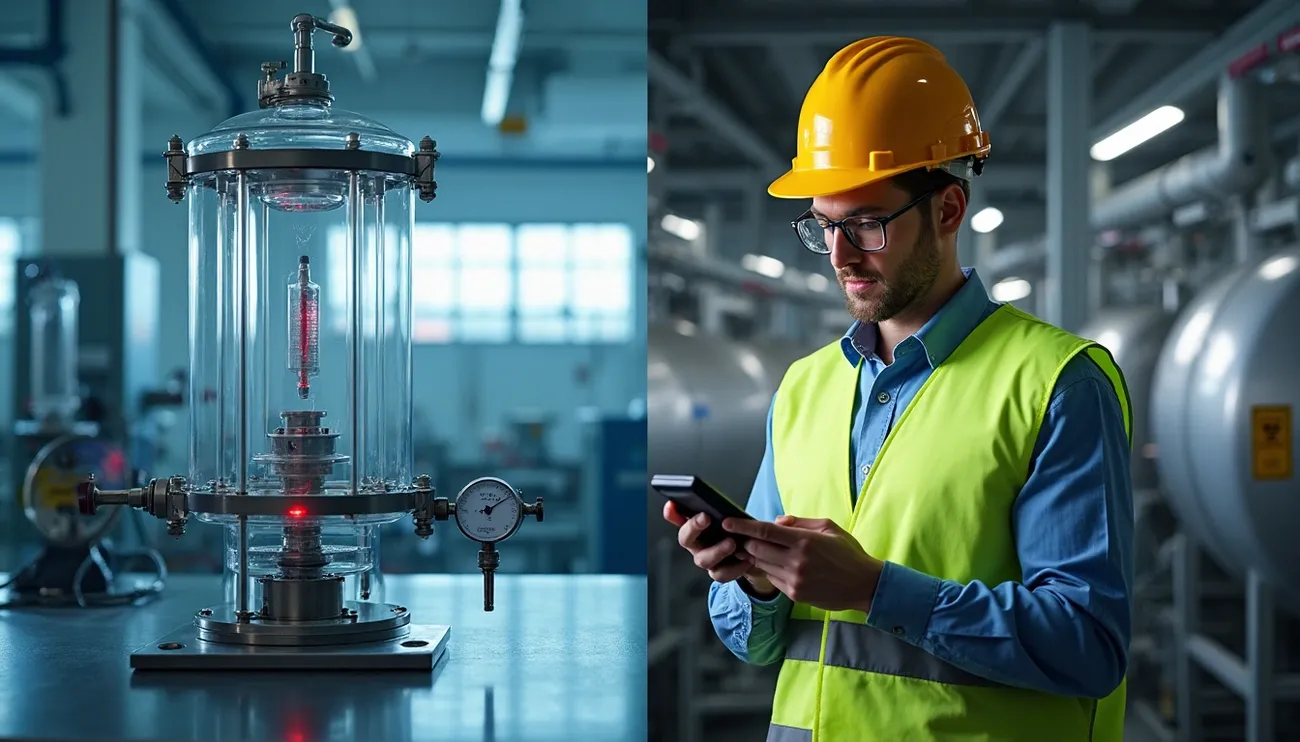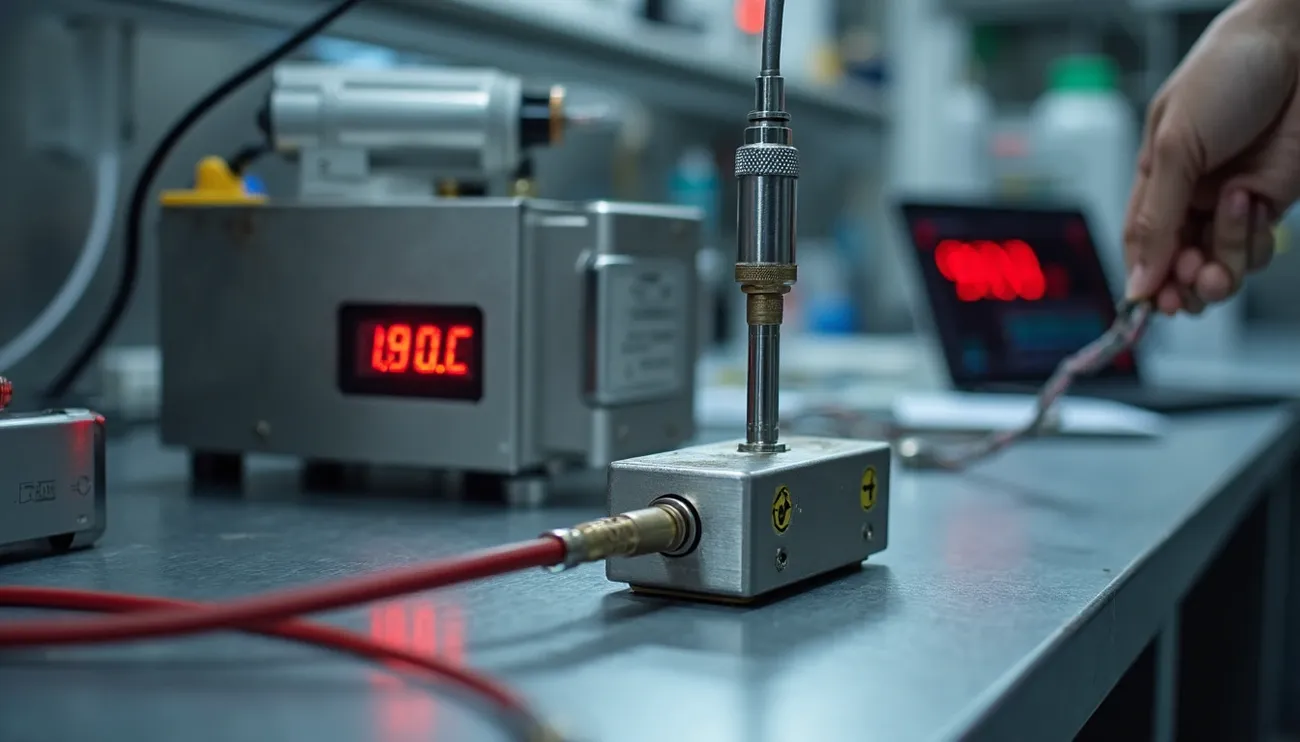
The difference between absolute vs gauge pressure is vital for anyone who works with pressure measurements in industrial settings. Using these pressure references incorrectly can lead to measurement errors of about 1 bar. These errors could cause system failures or give you wrong readings.
Engineers and technicians often find this basic concept challenging. You measure absolute pressure against a perfect vacuum, but gauge pressure uses atmospheric pressure as its reference point. Weather and altitude can affect gauge pressure readings, and weather changes alone can cause errors of up to ±30 mbar. Moving from sea level to higher altitudes can make these readings shift by as much as 200 mbar.
This piece explores the relationship between absolute and gauge pressure and their real-life applications. You’ll learn practical ways to avoid common measurement mistakes. Your specific applications – whether they involve pneumatic systems, vacuum equipment, or medical devices – need accurate pressure references. The right pressure reference choice helps ensure reliable measurements.
Real-World Applications of Pressure Measurement
Industrial automation and process control
Pressure measurement is a vital part of many industries. The choice between absolute and gauge pressure references will substantially affect system performance and safety.
Pressure sensors are the foundations of monitoring and controlling vital processes in industrial settings. These devices provide up-to-the-minute pressure monitoring in pipelines, storage tanks, and processing equipment. This monitoring will give a safe and efficient operation. Pressure transmitters turn physical pressure into electrical signals that automation systems can understand. This creates a vital connection between the physical environment and control systems. These sensors do more than measure pressure directly – they help determine flow rates, fluid levels, and product density. The right pressure regulators keep system pressures stable. This prevents pressure from dropping too low and causing system failure or climbing too high and damaging equipment.
Medical devices and blood pressure monitoring
Medical professionals need precise pressure measurements to monitor vital signs. Blood pressure monitoring uses the auscultatory method. This remains the gold standard even though mercury sphygmomanometers are being phased out. Modern blood pressure devices use oscillometric techniques to detect arterial pulsations under a pressure cuff. Pressure sensors are vital in ventilators, CPAP machines, and dialysis equipment. They ensure proper gas mixtures and fluid delivery. These applications need small, highly sensitive sensors that can detect tiny pressure changes while staying completely reliable.
HVAC and fluid systems
HVAC systems use almost 50% of total energy in buildings. They need pressure sensors to work efficiently. Differential pressure sensors monitor airflow across filters, ensure proper ventilation, and maintain comfortable indoor spaces. HVAC applications use pressure transmitters to monitor refrigerant pressures. Some sensors can detect pressures as low as 250 Pa with better than 0.01 Pa resolution. The right choice between absolute and gauge pressure sensors helps get accurate measurements in different environmental conditions.
Aerospace and altitude measurement
Pilots need pressure altitude measurements to fly safely and navigate. Aircraft determine altitude using pressure sensors above a standard datum plane where atmospheric pressure is 1,013.2 mbar. Mode “C” transponders tell air traffic control the pressure altitude, with adjustments for atmospheric changes. Static pressure and altitude follow the International Standard Atmosphere (ISA) model. At sea level, standard conditions are 29.92 inHg and 15°C.

How Absolute and Gauge Pressure Work
The basic difference between absolute and gauge pressure comes from their reference points. This creates vital variations in how we measure and interpret pressure readings.
Absolute pressure: measured from vacuum
Absolute pressure uses a perfect vacuum (zero pressure) as its reference point. Space contains this complete absence of matter. The readings from absolute pressure can never go below zero since measurements start from absolute zero. A sealed high vacuum exists behind the sensing diaphragm in absolute pressure sensors. These measurements remain unaffected by changes in atmospheric conditions. The sensors prove perfect to monitor barometric pressure and calculate altitude where environmental independence matters.
Gauge pressure: measured from atmosphere
Local atmospheric pressure serves as the reference point for gauge pressure readings. This makes it the most common way to measure pressure in daily use. At sea level, a gauge pressure of 0 PSIG equals approximately 14.7 PSIA. Gauge pressure readings can drop below zero when measuring vacuum, unlike absolute readings. Outside air touches the negative side of the pressure sensing diaphragm in vented gauge pressure transmitters. This allows automatic adjustments to ambient pressure changes. Such design features make these sensors ideal to monitor tire pressure and hydraulic systems.
Mathematical relationship between the two
A simple formula connects these two pressure types: Absolute Pressure = Gauge Pressure + Atmospheric Pressure. To name just one example, a tire gauge reading of 34 PSI means the absolute pressure equals 34 PSI plus 14.7 PSI (standard atmospheric pressure), which totals 48.7 PSI. The reverse calculation shows: Gauge Pressure = Absolute Pressure – Atmospheric Pressure.
Altitude and weather conditions can change gauge pressure readings. This relationship explains why. The same absolute pressure produces higher gauge readings at higher elevations where atmospheric pressure drops (approximately 12.5 PSIA in Denver). This knowledge proves vital to convert between measurement types when precise pressure control matters.
Avoiding Common Errors in Sensor Selection
Poor pressure sensor selection can get pricey and cause major problems in industrial systems. Let’s look at the most common mistakes you need to avoid:
Confusing gauge vs absolute pressure
Engineers often mix up gauge and absolute pressure sensors. This common mistake can lead to measurement errors of about 1 bar, especially in low-range devices. Using a gauge pressure sensor wrongly in an absolute pressure application creates extra errors of ±30 mbar from weather changes. These errors can reach up to 200 mbar when elevation changes from sea level to 2,000 meters. Such errors become huge problems in pneumatic applications with a 1 bar measuring range. The good news is they barely matter in 400 bar hydraulic systems.
Not accounting for environmental changes
Environmental factors affect sensor performance by a lot. Temperature fluctuations make materials expand or contract and change their dimensions and properties. Sensors face risks from high humidity that causes condensation and corrosion on sensitive parts. Vibrations add noise and make measurement systems unstable. It also turns out that electromagnetic fields from motors, transformers, and power lines interfere with nearby measurement equipment.
Improper sensor placement
The way you place sensors determines their accuracy and how long they last. Sensors mounted near board stress points like screw holes or large insertion components can give wrong pressure readings or damage MEMS structures. Putting sensors close to heat sources creates temperature gradients that reduce accuracy. You should keep at least 2 mm space between pressure sensor package land areas and other component pads or vias to get the best performance.
Best Practices for Accurate Pressure Measurement
Proper implementation of fundamentals and appropriate maintenance routines lead to accurate pressure measurements. Getting precision right depends on several key factors.
Understand your system’s pressure reference
You need to clarify whether you’re referring to absolute or gauge pressure when specifying pressure measurements. This is a vital difference since mixing these references can lead to measurement errors of approximately 1 bar. Static pressure measurements need pressure taps positioned perpendicular to the flow field to avoid influence from fluid movement. Your dynamic system pressure measurement needs at least 10 pipe diameters downstream of any obstruction and 2 pipe diameters upstream to be accurate.
Use calibrated and certified instruments
Calibration gives you measurement accuracy and reliability. The industry standard 4:1 test uncertainty ratio between your device under test and reference standard should be followed. Your calibration equipment needs to be at least four times more accurate than the instrument being tested. Pressure devices with accuracy better than 0.1% of full range need ten measurements during pressure increase and ten during decrease. Your instruments should carry proper certifications relevant to your industry, such as ISO 9001 for quality management.
Match sensor type to application needs
The right sensor selection depends on assessing several parameters. Your sensor’s pressure range should slightly exceed your system’s maximum pressure. Media compatibility matters—stainless steel and ceramic work well in harsh environments. Operating conditions including temperature, humidity, and electromagnetic interference presence need assessment. Your output signal should be compatible with your control systems.
Regularly inspect and maintain sensors
Your inspection schedules should run every six to twelve months based on application criticality. Look for physical damage, corrosion, and connection integrity during inspections. Clean your sensors with care and avoid aggressive chemicals that might damage components. Keep detailed records of all maintenance activities to track and predict future maintenance needs. These records help identify trends and optimize maintenance intervals.
Conclusion
Your pressure measurement systems’ success depends on knowing how to distinguish between absolute and gauge pressure. This piece explores how these two reference points serve distinct purposes in industries of all types. So, picking the wrong pressure reference can lead to measurement errors of about 1 bar—a mistake that could prove catastrophic in sensitive applications.
Pressure measurement isn’t as straightforward as it might seem. Weather changes can cause gauge pressure variations of ±30 mbar. Altitude differences might introduce errors up to 200 mbar. Your system’s reliability hinges on choosing the right pressure reference for your specific application.
On top of that, accurate measurements rely on several best practices. Proper sensor selection, regular calibration, strategic placement, and consistent maintenance are the foundations of reliable pressure measurement systems.
Note that you should clearly identify your need for absolute or gauge measurement when specifying a pressure sensor. This simple step, combined with proper maintenance and calibration, will substantially improve your system’s performance and reliability. Your pressure measurement systems will reward you with years of accurate, dependable service.
Contact us to discuss your options. We will provide you with a customized solution.




